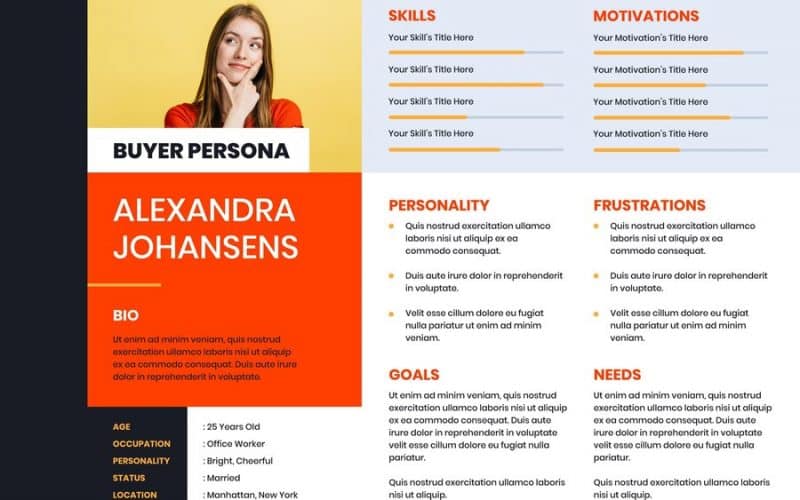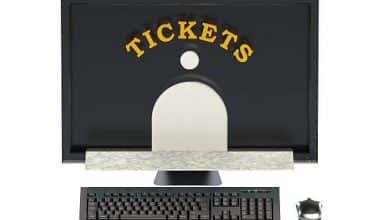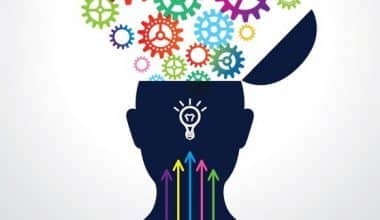Understanding your clients is critical in the large and ever-changing commercial landscape. To engage with and cater to your target audience effectively, you must first understand their preferences, behaviors, and wants. This is where customer profiles come in. In this blog article, we will examine the importance of customer profiles, the ideal customer profile, examples, how to use them, and practical tips for creating great customer profiles.
What is the Customer Profile
A customer profile is a detailed description of your ideal customer. It includes crucial demographics, psychographics, and behavioral patterns that characterize your target audience. Understanding your clients allows you to customize your marketing efforts, fine-tune your messaging, and provide a more personalized experience.
Ideal Customer Profile
Your ideal customer profile is the archetype of customers who are most likely to benefit from your products or services and become committed brand champions. It includes characteristics like psychographics, pain points, behaviors, and goals in addition to demographics. By defining your ICP, you can focus your efforts, adjust your messaging, and provide a tailored experience that resonates with your target audience.
Begin by studying your current customers to create a successful ideal customer profile. Determine which consumers have demonstrated the highest levels of engagement, satisfaction, and loyalty. Look for demographic, interest, and behavior similarities among them. This analysis assists you in identifying patterns and insights that will serve as the foundation of your ICP.
Consider your ideal consumers’ demographics, such as age, gender, location, income level, and occupation. While demographics are a good place to start, it’s also important to look into psychographics. Learn about their values, beliefs, hobbies, and motivations. What motivates them? What are their ambitions and goals? You can create a more complex and accurate ideal customer profile by delving into these psychographic components.
Understanding the pain points and issues that your ideal consumers confront is another critical component of the ICP. What issues must be resolved? How does your product or service alleviate such problems? You promote yourself as a solution provider and boost the likelihood of conversion by aligning your services with their individual needs.
More Information:
The ideal customer profile heavily relies on behavioral factors. Examine your clients’ actions throughout the purchasing process. What outlets do people utilize to learn about new products and services? How do they conduct research and weigh options? What factors influence their decision-making? Insights on these behaviors can help you adjust your marketing channels and strategies to reach and engage your target audience more successfully.
It is critical to disseminate your ideal customer profile throughout your organization once you have defined it. Ascertain that your marketing, sales, and customer support teams are all on the same page and have a clear grasp of your ICP. This guarantees consistent messages, tailored interactions, and a consistent consumer experience across all touchpoints.
Keep in mind that your ICP is not set in stone. Your ICP may need to be adjusted as your firm evolves and grows to remain relevant. Monitor market developments, customer feedback, and industry information regularly to fine-tune your ICP and ensure its correctness.
Example of Customer Profile
Let’s look at an example to better grasp the notion of a customer profile and its practical use. In this section, we’ll look at a hypothetical scenario example and create a customer profile for a fictitious company called XYZ Electronics, which sells luxury smart home gadgets.
- Demographics: XYZ Electronics targets urban, tech-savvy adults aged 30-45. They often have more spare cash and may thus afford to invest in high-quality smart home equipment. This demographic group prioritizes convenience, efficiency, and the most recent technical advancements.
- Psychographics: Our ideal clients are early adopters who appreciate keeping connected and embracing technology. They are intrigued by the possibilities of a connected home and are eager to invest in things that will improve their quality of life. They value seamless integration, ease of use, and intelligent features that make their daily lives easier.
- Pain Points: One of the challenges that our ideal consumers experience is the difficulty of controlling many devices and systems in their homes. They want a solution that centralizes control, streamlines the user experience, and works with a variety of smart devices and platforms. They also prioritize data security and privacy because they want to secure their personal information and smart home networks.
- Behaviors: Our ideal consumers are engaged online shoppers who do considerable research before making a purchase. To get information and make informed selections, they rely on internet reviews, forums, and social media communities. They are technologically adept and at ease purchasing products online, using e-commerce platforms and mobile apps for convenience.
Based on the facts provided above, the customer profile for XYZ Electronics’ ideal customer is as follows:
Ideal Customer Profile for XYZ Electronics:
- Demographics: Tech-savvy persons aged 30-45 who live in cities and have more disposable income.
- Psychographics: Early adopters who appreciate convenience, efficiency, and the most recent technical breakthroughs. They value seamless integration and ease of use in their connected lives.
- Pain Points: Pain points include the difficulty of managing many gadgets and systems in their homes, as well as the desire for a centralized control solution that is compatible and secure.
- Behaviors: Active online shoppers who conduct thorough research, rely on online reviews, and make purchases through e-commerce platforms and mobile apps.
XYZ Electronics can adjust its marketing strategies, messaging, and product development efforts to properly cater to the wants and interests of its ideal customers by building this customer profile. They can emphasize the ease, compatibility, and advanced capabilities of their smart home gadgets, addressing their target audience’s pain points and needs.
How to Create Customer Profile
Creating a successful customer profile is the first step in identifying and connecting with your target audience. In this part, we’ll provide you with practical tips on how to create a customer profile that can help you generate business success.
#1. Perform Market Research:
Begin by obtaining information and insights about your target market. Collect information on demographics, psychographics, behaviors, and preferences using both primary and secondary research methodologies. Surveys, interviews, focus groups, and web analytics tools can all provide useful information to help you create a customer profile.
#2. Examine Current Customer Data:
Examine data from your existing consumer base to uncover patterns and common qualities. Look for patterns in demographics, buying history, levels of involvement, and consumer feedback. This study might provide useful information on who your most loyal and profitable clients are.
#3. Define Demographic Factors:
Determine which demographic factors are important to your company, such as age, gender, location, income level, occupation, and education. Understanding your target audience’s demographics allows you to adapt your marketing messaging and select the most successful means for reaching them.
#4. Investigate Psychographic Elements:
Investigate the psychographic characteristics of your target audience in greater depth. Think about their values, beliefs, interests, hobbies, goals, and lifestyle choices. Understanding your clients’ psychographics allows you to build messaging and experiences that speak to their motivations and goals.
#5. Determine Pain Points and Needs:
Determine your target audience’s pain points, issues, and needs. What issues are they attempting to address? How does your product or service address those issues? You present yourself as a solution provider and establish a compelling value proposition by connecting your products with their needs.
#6. Investigate Consumer Behavior:
Analyze your target audience’s actions and preferences throughout their customer journey. Examine their online and offline activity, purchasing decisions, preferred communication platforms, and influencers they follow. This data assists you in optimizing your marketing efforts and providing personalized experiences.
#7. Create Customer Personas:
Create customer personas using the data and insights you’ve obtained. Customer personas are fictitious depictions of your target consumers that exemplify the core features, motivations, and behaviors of your audience groups. Give each persona a name, a backstory, and unique characteristics to make them accessible and actionable.
#8. Validation and Refinement:
As you gain more data and insights, continue to validate and develop your consumer profiles. To ensure the accuracy and relevance of your consumer profiles, monitor market changes, connect with your customers, and collect feedback. Stay flexible and change your techniques when your target audience’s needs and preferences change.
Communicate your customer profiles across your organization to ensure team alignment. Ensure that your marketing, sales, product development, and customer support teams all have a solid understanding of your target demographic. This coordination aids in the delivery of consistent messaging and a smooth client experience.
#10. Review and Update Regularly:
Customer profiles are not static documents. Review and update your customer profiles regularly to reflect market developments, industry trends, and client preferences. To remain relevant and effectively target your audience, stay proactive in monitoring changes in demographics, behaviors, and demands.
A customer profile is created by a combination of research, analysis, and understanding of your target audience. Validate, refine, and share your customer profiles regularly to fuel focused marketing tactics, tailored experiences, and long-term business success.
How to Make Use of Customer Profiles
- Refining Your Marketing Strategy: Armed with a complete customer profile, you may create marketing plans that precisely address the pain areas, objectives, and preferences of your target audience. Customize your messaging, channels, and content to line with their values and effectively attract their attention.
- Product Development and Innovation: Understanding your client’s requirements and wishes allows you to create products or services that satisfy their expectations perfectly. Customer profiles guide your decision-making, allowing you to design offers that are appealing to your target demographic and outperform your competition.
- Customer Experience: Use customer profiles to provide personalized experiences at every touchpoint. Providing a personalized experience develops client loyalty and increases brand affinity across the board, from website design and user interfaces to bespoke email campaigns and customer support contacts.
- Targeted Advertising & Campaigns: Armed with consumer profiles, you may enhance your advertising efforts by focusing on specific demographics, interests, or places. This tailored strategy guarantees that your marketing messages are sent to the proper people, boosting the chances of conversion and engagement.
- Customer Retention and Loyalty: By getting to know your customers better, you may anticipate their needs, offer proactive help, and provide exclusive rewards or incentives. This increases consumer loyalty, encourages repeat purchases, and converts customers into brand advocates.
How do you format a customer profile?
Here are five steps to creating a client profile:
- Make use of client profile templates.
- Determine customer pain points and solutions.
- Discover the most popular demographics and habits.
- Collect and evaluate consumer feedback.
- Locate the best software for integrating data across tools and systems.
What are the 4 types of customer profiles?
Customer profiles can be classified in a variety of ways, and different firms may employ different frameworks. However, four common types of consumer profiles are as follows:
- Demographic Profiles
- Psychographic Profiles
- Behavioral Profiles
- Buyer Persona Profiles
What is an example of a customer demographic profile?
Customer demographics are consumer group classifications used in business. Age, gender, race/ethnicity, household income, education level, marital status, and geographical location are the most regularly utilized categories.
What are the elements of a client profile?
A customer profile contains demographic, psychographic, geographic, socioeconomic, and behavioral information. A company can benefit from customer profiling in a variety of ways. It assists firms in learning about their customers’ preferences.
Why is customer profile important?
Consumer profiling is critical in marketing because it allows you to target the right customers and engage with them successfully. It can result in more successful marketing campaigns, increased income, and, most importantly, happier customers.
What is a retail consumer profile?
A customer profile provides a snapshot of the people or businesses that the retailer serves and is used to develop marketing initiatives, merchandise selection, customer service, and sales processes.
Conclusion
Customer profiles are essential tools for businesses looking to effectively identify, interact with, and service their target customer. Customer profiles enable organizations to make data-driven decisions and develop long-term customer connections by identifying the ideal consumer, personalizing marketing strategies, generating personalized experiences, and cultivating brand loyalty. By devoting time and resources to developing and implementing customer profiles, you position your company for development, relevance, and success in an increasingly competitive market. Accept the power of customer profiles and watch as your company grows by providing excellent value to your intended audience.
- TARGET DEMOGRAPHIC: Definition, Purposes, and Examples
- Demographic Segmentation: Best Marketing Practices with Examples
- Target Market: Best Practices & How to Define Them in 2023
- HOW TO CREATE A GOOGLE BUSINESS PROFILE: Explained!
- Google Business Profile: Meaning & Best Easy 2023 Guide
- 11 Lack of Empathy Signs & How to Deal with Them in Workplace






